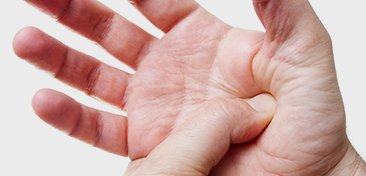Scholars believe that the earliest evidence for the practice of acupuncture may have come about in China close to 4000 years ago. We believe that acupressure techniques may have been used at least by another millennium before acupuncture. At some point, acupressure doctors lost their popularity, with acupressure being considered inferior to acupuncture and herbology. This most likely occurred because ancient Chinese medicine doctors avoided touching their elite patients excessively as a sign of respect.
Over time the highest form of Chinese medicine came to be from observation and prescription of Chinese medicine herbs. In more modern times, acupressure doctors have gained back popularity because of its use in areas of China that did not have access to Western-trained doctors, drugs or herbs. The West has embraces this type of practice because of its safety, ease and efficacy. The acupressure system uses the same points on the body as acupuncture. However, instead of needles, one can use a tool, fingers or hands to place pressure on specific points.
I love using acupressure for the entire family, and especially for my kids, because it allows me to use medications more sparingly on them. Plus the kids think it’s pretty cool!
These are the points I use most commonly for everyday conditions. There are different techniques that can be used to stimulate the points, but I generally prefer to either use the press and release method (the point is pressed and released 30-50 times) or the circular rubbing method (the point is depressed to the level of a small ache by using the middle or index finger and rubbed for 30-50 times).
Head & Neck Pain (LI 4, He Gu)
This well-known and commonly used acupressure point lies at the highest point formed when the thumb and index finger are brought together.
It is my first choice for many disorders of the head and neck, including headaches, neck stiffness, chronic bronchitis, sinusitis, dizziness, tinnitus (ringing in ears), toothache, common cold, redness and swelling of eyes and face, nasal obstruction and any type of facial, nasal or ear pain. Combined with theLiver 3 point on the foot (see below) it is best known as “The Four Gates”. This combination of four points (bilateral LI 4 and LIV 3) is used exclusively as the cure-all by many practitioners and can be helpful for generalized body pain and insomnia. LI 4 or He Gu does induce labor and is therefore contraindicated during pregnancy.
Lower Extremity Disorders (Liver 3, Tai Chong)
Found on top of the foot between the 1st and 2nd toe, Liver 3 is a commonly used point by acupuncture and acupressure doctors. This point is effective for issues such as painful menstruation, hernia, impotence, PMS, nausea, vomiting, diarrhea and constipation. Additionally, it is a calming point, good for anger, anxiety and insomnia. As mentioned previously, in combination with LI 4, it is a powerful blood and Qi mover.
Acupressure for Nausea, Heartburn, Motion Sickness (P 6, Nei Guan)
Located in the inner wrist, about three finger widths (or 2 inches) from the top crease in the wrist and centered in the groove between the two large tendons, is acupressure point P6. This point is responsible for relaxing the chest area, which could help in asthma or palpitations. Acupressure for nausea, motion sickness and vomiting has proven effective. Studies show that P6 is effective in decreasing chemotherapy-induced nausea, vomiting, and anxiety in patients with breast cancer. While there are some inconsistencies in the literature, it appears that this point may have benefits in post-op nausea/vomiting, decreasing labor pain in pregnancy, vertigo and carpal tunnel syndrome.
Get Out of Your Head (Kidney 1, Yong Quan)
Acupressure point Kidney 1 can be easily found by flexing your foot down toward the ground. The small depression in the upper-mid part of the foot is where the point is located. I love this point for a number of reasons. First of all, it’s pretty easy to find and stimulate. It can be stimulated with fingers or golf ball while you are going about your daily work. Second, it is a great grounding point – a point that encourages the flow of energy down…out of the head. This is a great point to stimulate when you are obsessing or anxious over something. It is also a great tool to use for insomnia, headaches, ringing in the ears and chronic sore throats.
References:
1. Genc F, Tan M. The effect of acupressure application on chemotherapy-induced nausea, vomiting and anxiety in patients with breast cancer. Palliat Support Care. 2014 Apr 30:1-10
2. Hjelmstedt A. Acupressure to reduce labor pain: a randomized controlled trial. Acta Obstet Gynecol Scand. 2010 Nov;89(11):1453-9.
3. Lee E, Frazier S. The Efficacy of Acupressure for Symptom Management: A Systematic Review
4. J Pain Symptom Manage. 2011 October; 42(4): 589–603. Published online 2011 April 30.



